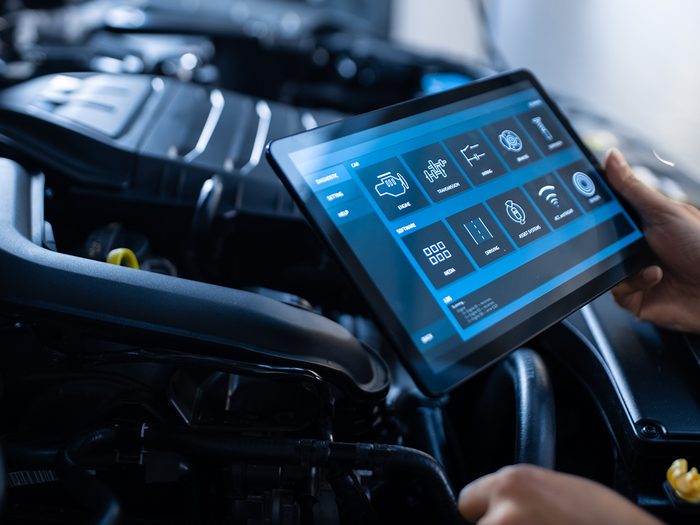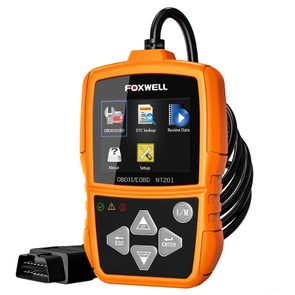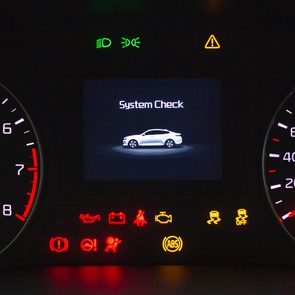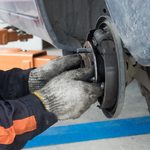What is a Car Diagnostic Scanner—And Do You Need One?

If your check engine light is on, you may save time and money by identifying the problem yourself with a car diagnostic scanner.
Our editors and experts handpick every product we feature. We may earn a commission from your purchases.
We were halfway across the country when our van’s check engine light came on. We took it to a dealer, who charged us thousands of dollars for parts that didn’t fix the problem.
That’s when we bought our first car diagnostic scanner. Within an hour we figured out the actual problem, which ended up being a $150 part that took less than an hour to replace.
We’ve since heard similar complaints from many other people. A lot of it has to do with the increasingly complex electrical and emission systems and sensors in today’s vehicles. But if you have a little wrenching knowledge, you don’t necessarily have to be at the mercy of the repair shop.
Here’s what a car diagnostic scanner can do for you, and those annoying warning lights on your dashboard.
What is a car diagnostic scanner?
A car diagnostic scanner—aka an on-board diagnostics scanner or an OBD2 code reader—is a device that communicates with your vehicle’s computer system to retrieve information about its performance and potential problems.
“Since 1996, every car, light truck, SUV, minivan and hybrid sold in North America has been required to have an on-board diagnostic [OBD2] system,” says Keith Andreasen, an Automotive Service Excellence (ASE) certified master technician and tool product manager at Innova Electronics.
“It monitors a vehicle’s systems that trigger the check engine light and alert drivers about issues related to emissions, fuel economy and drivability.”
What can a car diagnostic scanner do?
It helps DIYers and professional automotive technicians figure out what’s wrong with a vehicle.
Some scanners just read codes, while others are more complex, monitoring real-time data. All OBD devices plug into a standardized port, usually under the steering wheel.
All OBD devices read diagnostic trouble codes (DTCs) generated by the vehicle’s onboard computer. “The scanner can display these codes in a human-readable format, helping users identify the problem area,” says Andreasen.
Other functions of car diagnostic scanners can include:
- Clearing trouble codes once a vehicle has been fixed, which will turn off the check engine light, the tire pressure sensor light and other warning signals.
- Monitoring real-time data for various sensors and systems, like engine RPM, vehicle speed, coolant temperature and oxygen sensor readings.
- Retrieving freeze-frame data, a snapshot of the vehicle’s system when the code was triggered.
- Viewing live data streams from multiple sensors to diagnose complex issues that involve interactions between systems.
- Letting you know if your vehicle will pass an emissions test.
- Retrieving information like VIN numbers and system calibrations.
- Performing active tests (bi-directional controls), during which you can send commands to the vehicle’s systems and components.
- Installing software updates.
What can’t a car diagnostic scanner do?
While the capabilities of OBD2 devices vary depending on their price and manufacturer, in general they cannot:
- Repair your car for you.
- Predict future failures, although some databases, apps and solutions can help with that when used with a scanner.
- Diagnose non-electrical issues like low tire tread, a failing water pump or poor fuel quality.
- Override vehicle safety systems and manufacturer settings.
- Replace proper maintenance, like oil changes and fluid checks.
- Provide detailed mechanical diagnosis. “While scanners can point out areas of concern, they might not provide detailed explanations for the root cause of a problem,” says Andreasen. “This often requires further investigation by a skilled mechanic.”
Who needs a car diagnostic scanner?
It’s a valuable tool for anyone who likes to work on their car, because it lets you problem-solve repairs without paying an auto mechanic to do it.
“A consumer with little automotive repair experience can use a diagnostic scanner to check a vehicle for road trip readiness, see if their car is ready to pass an emissions test, or better understand why the check engine light is on,” says Andreasen.
If you’re not ready to buy one yet but your check engine light is on, most auto parts stores carry basic code readers and will read your code for free on the spot.
Next, check out 20 car tools no home mechanic should be without.






